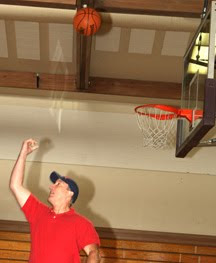 Photos from Santa Rosa Junior College (California) 2010 dance recital,
Photos from Santa Rosa Junior College (California) 2010 dance recital,
105mm, 1/250 sec, f/4, Mode: Av, ISO: 1250.Sometimes I’m too analytical when making decisions. Oh well, engineering background, can’t help it. So I’m considering the pros and cons of buying my next Canon pro camera , the 1D Mark IV. I have the Mark III and an older Mark II. Love ‘em both. With the purchase, Celeste can trade her Mark II for the Mark III.
The main technical considerations are noise performance and resolution. Resolution (pixel count) is no contest. More is better. The Mark III image is 3888 pixels horizontally. The IV has a thousand more pixels at 4896. This is great for image clarity, especially with close cropping. Memory is cheap, so the larger file sizes of the IV won’t be a problem.
Above is a crop of the original dance image was shot with an ISO of 1250 through a telephoto lens.

The close-up of the dancer is fuzzy due to noise, but there is no pixilation which can be seen in a further close-up of the eye.

The increased resolution of the Mark IV would add 25% more pixels in each dimension, so I would get four times higher resolution for the same-size image area.
With ISO settings of 1600 and higher, noise causes even bright images to blur as if they were out of focus, as shown in these images from the same dance recital.

Above is a telephoto image shot in bright light. Little noise is present. Below, the noise with an ISO of 2500 in low light, shows up as random texturing of the dancer’s skin.

The image below is blurred by noise in very low light.

Performance shooting is often in low stage lighting, so I need improved resolution, noise, and sensitivity at 1600 to 2500 ISO. The improved noise of the Canon 1D Mark IV over the III, combined with its better resolution and sensitivity will greatly improve the clarity of my images, whether for large prints or cropping an image down.
For a full discussion of the noise performance of the Canon 1D mark IV, and many more models, see the excellent non-partisan review at
http://www.dpreview.com/reviews/CanonEOS1DMarkIV/page17.aspIs this all wishful thinking to justify the purchase of another expensive camera body?
You bet!












































